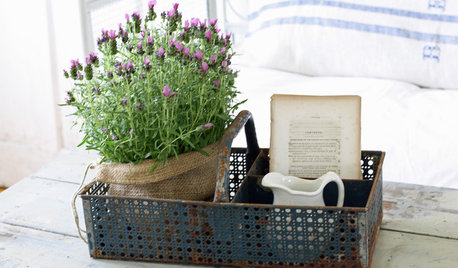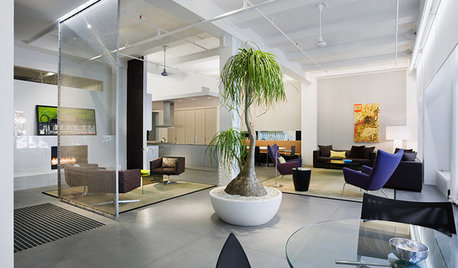Repotting necessary?
ryguy487
11 years ago
Related Stories

HOUSEPLANTS8 Essentials for Healthy Indoor Plants
Houseplants add so much to our homes — and can thrive when grown in the right conditions. Keep these tips in mind
Full Story
HOUSEPLANTSMother-in-Law's Tongue: Surprisingly Easy to Please
This low-maintenance, high-impact houseplant fits in with any design and can clear the air, too
Full Story
HOUSEPLANTSHow to Grow Orchids Indoors
Orchids are the exotic aristocrats of the flower world and can make themselves comfortable in almost any home
Full Story
HOUSEPLANTSMeet a Houseplant With Excellent Communication Skills
It droops when thirsty, revives quickly and thrives under fluorescents. You may want to hire this hard worker for both home and office
Full Story
HOUSEPLANTSOutsmart Winter — Make Houseplants of Your Garden Growers
No need to watch Jack Frost play Wreck the Rosemary. Bring your garden inside for the winter, using containers and these guidelines
Full Story
HOUSEPLANTSHow to Force Amaryllis Bulbs Indoors
Enjoy vibrant red blossoms even as gardens turn snowy white, by teaching this hardy repeat performer to ignore the calendar
Full Story
HOUSEPLANTSMeet a Long-Lasting Houseplant With a Forgiving Heart
Low light and little watering won't scar Zee Zee plant for life; this East Africa native has a tolerant nature and an exotic beauty
Full Story
HOUSEPLANTSMaidenhair Fern Brings Lacy Grace to a Room
Give this houseplant damsel lots of water and humidity, and a happy ending can be enjoyed by all
Full Story
HOUSEPLANTSGot Bright Light but Lack Spare Time? Try Ponytail Palm
This low-maintenance houseplant has an exotic look and a drought-tolerant nature. Just give it lots of sun
Full Story
GARDENING GUIDESHow to Keep Your Citrus Trees Well Fed and Healthy
Ripe for some citrus fertilizer know-how? This mini guide will help your lemon, orange and grapefruit trees flourish
Full StoryMore Discussions









christine1950
bedtime
Related Professionals
Baltimore Landscape Architects & Landscape Designers · Carson Landscape Architects & Landscape Designers · Saint Louis Park Landscape Architects & Landscape Designers · Brentwood Landscape Contractors · Burlington Landscape Contractors · Middletown Landscape Contractors · Braintree Landscape Contractors · Clearlake Landscape Contractors · Metairie Landscape Contractors · Mission Bend Landscape Contractors · New Brighton Landscape Contractors · Reedley Landscape Contractors · Appleton Interior Designers & Decorators · Hercules Interior Designers & Decorators · Shorewood Interior Designers & Decoratorspirate_girl
ryguy487Original Author
Tiffany, purpleinopp Z8b Opp, AL
tapla (mid-Michigan, USDA z5b-6a)